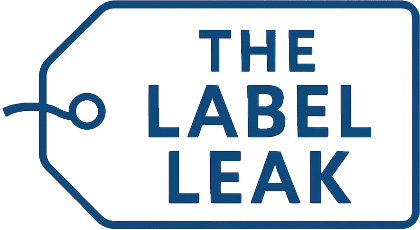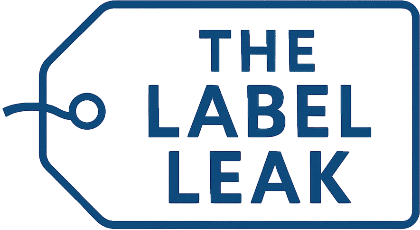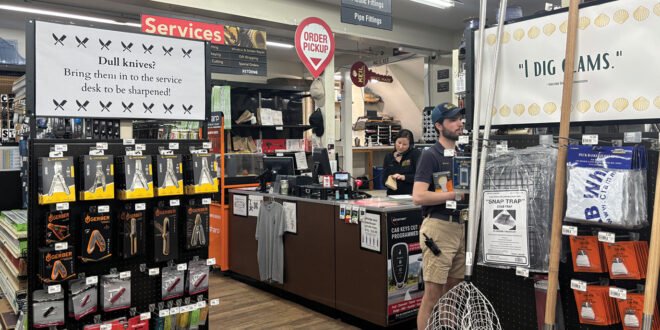Break the Cycle of Bad Returns: Keep Customers Happy With an Upgrade to Your Customer Returns Policy
According to the National Retail Federation (NRF) and Happy Returns 2024 Customer Returns in the Retail Industry Report, retailers estimated that 16.9% of their annual sales in 2024 were returned, making customer returns a headache for many retailers, regardless of their size. And customers are not making it any easier on retailers; the NRF report found that 67% of consumers said a negative returns experience would discourage them from shopping with a retailer again and 84% of consumers report being more likely to shop with a retailer that offers no box/no label returns and immediate refunds.
In its 2024 How Important Are Returns to Customers report, Appriss Retail, a software company specializing in omnichannel retail fraud and abuse protection, uncovered similar sentiments from customers. The report found 55% of consumers have decided not to buy from retailers due to restrictive returns policies, 31% stopped shopping at certain retailers due to negative returns experiences and 70% of consumers made additional purchases due to positive returns interactions.
These numbers don’t only apply to larger businesses; customers of small and medium-size businesses also have the same high standards when it comes to returns.
Pedro Ramos, Appriss Retail chief revenue officer, says independent retailers who don’t take a proactive approach to creating effective returns policies that fight fraud and satisfy customers expectations are just as vulnerable as larger, big-box retailers or department stores.
“Shoppers have become familiar with open and flexible returns policies ever since the e-commerce boom and expect an efficient, frictionless returns process both online and in-store,” Ramos says. “When that doesn’t happen, the shopper’s loyalty to the retailer is negatively impacted.”
Offering a seamless returns policy while still keeping costs down and avoiding fraud can be a challenging balancing act for retailers. To guide retailers as they develop their policies, several retailers share their returns policies and the ways they have found to mitigate fraud and keep customers satisfied.
Components of an Effective Return Policy
When developing returns policies, many retailers are turning to blanket policies and restrictions or specific rules engines that apply to everyone across the board, Ramos says.
“An effective returns policy is not one-size-fits-all, it is one that considers a customer’s entire shopping history and behavior with the retailer,” Ramos says. “A blanket policy only harms customer loyalty in the long run as honest customers are treated the same as fraudsters.”
As retailers finesse their policies, Ramos says technology and artificial intelligence (AI) are useful tools to consider a customer’s total value to the retailer and create individualized decisions that stop fraudsters while maintaining seamless returns for honest shoppers.
“Retailers can leverage technologies that organize their data effectively. By unifying transaction data, shopper information and inventory management across all channels, AI-driven returns authorization technology can accurately identify fraudsters and introduce friction into fraudulent transactions, all while safeguarding honest customers,” Ramos says. “With fraudulent returns and claims on the rise, retailers must harness their customer data to minimize these losses effectively.”
For Amy Earls, vice president of operations at Page Hardware & Appliance Co. in Guilford, Connecticut, developing a customer returns policy for the operation was necessary to set customer expectations, protect the business and help employees understand what answers to give to customers. As they were developing the customer returns policy, Earls says they read through the returns policies for other area businesses and competitors.
“We want to remain competitive in the convenience factor that returns can offer,” Earls says. “We did our best to write a policy that is fair and protects our company, but is also a policy that our employees feel comfortable enforcing.”
Along with carrying a wide variety of categories, including hardware, lawn and garden, paint and housewares, Page Hardware & Appliance also sells major appliance products, which required a separate returns policy. Earls says the appliance returns policy is based on competitor policies and has become stricter over the years after the business was left with several custom ventilation pieces they could not resell and had designers try to return pieces that didn’t fit due to their own measurement errors.
Key components of the hardware returns policy at Page Hardware & Appliance include:
- Any returns made within 60 days of date of purchase with original receipt are eligible for a full refund
- Returns without a receipt receive store credit in the amount of the item’s lowest sale price
- Refunds for purchases made with a credit card or debit card will only be credited to the card used to make the purchase, unless approved by a manager
- Items returned must be in new, unused condition, including all original packaging, manuals and accessories
- Cashiers may request a customer’s full name, address and phone number on all returns
- Returns are not accepted on customized products such as tinted paint, cut glass, rope, chain, tubing, wire, pipe and re-keyed locks
- For appliances, returns are only considered for products in the original, sealed packaging and there is a restocking fee of 40%
- Air conditioners and dehumidifiers are not returnable once the box is opened and special order and custom appliance orders are nonrefundable once the order is placed and finalized
Customer service goes hand-in-hand with Page Hardware & Appliance’s returns policies. The appliance department returns policy encourages customers to take advantage of the sales teams’ expertise to help them choose the right product for their project, hopefully eliminating situations where customers purchase a product that does not meet their needs.
“We will provide appliance specifications to customers’ contractors and designers or arrange for a measurement to ensure that the appliances that customers order fit their space,” Earls says. “Our goal is to provide the best service up front and through the entire sale.”
The returns policy at Woodstock Hardware in Woodstock, New York, is unwritten and unposted and is instead guided by customer expectations, industry norms and personal decisions, says owner Vince Christofora.
“Thankfully we live in an area and have customer demographics that result in minor returns and few attempts at fraud,” Christofora says. “As a medium-size, Main Street hardware store in a small town, selling relatively few large ticket items, our returns policy is quite simple.”
Woodstock Hardware’s policy starts with treating customers wanting to make returns with the same amount of enthusiasm as a customer who is making a large purchase.
“A smile and a positive attitude go a long way at diffusing any tensions and unreasonable expectations a customer may have with their return,” Christofora says. “At the same time, we are internally defensive while processing the legitimacy of the return. Fraud is always on our mind, and there are always cases where we have to rely on our gut feeling.”
At Woodstock Hardware, customers can return any like-new merchandise with a receipt and receive a refund in the same type of payment used at purchase.
“We return cash to long-time customers and store credit to any unfamiliar faces,” Christofora says. “Any credits for items purchased with a check must be approved by a manager.”
Without a receipt, employees confirm the store stocks the item through the point-of-sale system and then follow the same steps as a return with a receipt. Employees rely on the point-of-sale system purchase history to select a fair return price or find the sale through the store’s rewards system, which records purchases for each customer who is a part of the rewards program.
The store also processes returns for damaged or broken items that are obviously manufacturer defects quickly without question, Christofora says.
When it comes to gray areas, where the item being returned is not in new condition, has been used or broken through abuse, employees handle those returns “by committee” and if need be, by involving Christofora in the decision.
“For me, the most important thing is not alienating or losing a customer over a return, but we do not want to be taken advantage of,” Christofora says.
Communicating Your Policies
Regardless of the specifics of your returns policy, it’s crucial to communicate those policies in several different ways.
Ramos says if a retailer chooses to implement a blanket returns policy, the specific terms should be clearly available on the company’s website and in the stores during the purchase process.
“For retailers who take a more proactive, individualized approach to returns authorization—a strategy that benefits both the retailer and loyal customers—it’s crucial to be transparent about the reasons behind a denied return,” Ramos says. “Customers should also be able to access a retail activity report that details why a recommendation for a warning or denial of a return was given.”
Page Hardware & Appliance’s full returns policy is posted on the counter at the service desk, where returns are processed, a summary is printed on the receipts and the policy is listed on the store’s website. Additionally, some appliance SKUs have a note that automatically prints on the invoice, stating they are not returnable or subject to restocking fees.
Avoid Running on Autopilot
To stay competitive and serve customers with the highest level of service, Page’s returns policy has evolved many times over the years, Earls says.
“I was recently going through some old files and came across merchandise returns slips that we used in the 1980s,” Earls says. “The cashier had to fill out customer information, product details, how the refund was made and get a customer signature.”
Today, the returns process is automated. The store utilizes Epicor’s Returns Validation, so employees processing returns only need to ask for a phone number to find the customer and purchase information. After Epicor introduced the ability to return money directly to a gift card, Earls set a time frame for a customer to receive their refund in the original tender. After that time, the refund is given on a gift card.
“For a long time, we collected returns in a box and the manager reviewed them at the end of the day, prior to putting the product back on the shelf,” Earls says. “Problems were rarely discovered and the process created issues because the inventory was not on the shelf, so we no longer require manager review.”
Another major evolution was the move to process all returns at one desk. Previously, returns were processed at all cash registers, but when the store underwent a remodel in 2012, Earls added a service desk to process all returns. Having one desk to process returns eliminated having customers who were making purchases waiting in line behind unhappy customers looking to return defective products. Returns often take longer than sales, so the move also sped up the point-of-sale process.
“Limiting returns to the service desk also reduces the number of employees who need to be trained on the returns process, which in turn reduces processing errors and inconsistent messaging to customers about what is allowed,” Earls says.
Fighting Returns Fraud
Appriss Retail’s 2024 Consumer Returns in the Retail Industry report took a closer look at the impact of returns fraud. In 2024, total returns for the retail industry reached $685 billion and the total returns rate as a percentage of sales for 2024 was 13.21%. Of those returns, 15.14% were fraudulent, totaling $103 billion.
Fortunately for Earls, overall, customers are pleased with the store’s returns policies and the store has experienced minimal returns fraud. She says customers are often surprised they can make returns beyond 30 days, and the people who are unhappy about the policy are usually the ones who are trying to return a product they bought over a year ago or from another store, or they are trying to pass off a used product as new or a working product as defective.
When it comes to fraud, there are a couple of customers who the employees know to watch out for and the service desk employees and managers know when to be firm and refuse a return.
“For the most part, we make the returns process easy and quick, to be convenient,” Earls says. “Customers appreciate this, and since they don’t need to be sneaky to get credit, it encourages honesty.”
Customer service is also a crucial part of how Christofora mitigates abuse fraud at Woodstock Hardware.
“If a customer pulls one over on you resulting in a loss, alienating them does little good. You can get mad at them and send them on their way and you can be sure you lost the money and will never recoup your loss,” Christofora says. “But if you can patiently serve the customer, assuming there is no repeat behavior, you will have the opportunity to recoup your loss through the profit you make on later sales.”
Occasionally, employees at Woodstock Hardware run into the instance where it is obvious a customer is trying to scam them. Christofora has the employees defer those situations to him, and if he is not in the store at that time, they have the authority to defer processing a return until he can review the situation.
In the end, Christofora says crafting returns policies and preventing fraud comes down to managing evolving customer expectations, providing a positive experience for the customer and ensuring the customer receives monetarily what is due—no less, no more. It’s also crucial to make sure your store’s inventory quantity on hand is adjusted correctly, something he says could be the most important item.
“It’s easy for anyone involved in the returns process to think that taking the return is the cost of doing business,” Christofora says. “That’s easy for them to say—it is not their money. We have to be purposeful in our policies.”
Purging Product: Keep Returned Products from Piling Up in Your Store
Whether the product comes back to the store legitimately or not, retailers still have to figure out ways to purge returned products that cannot be sent back to the vendor or manufacturer.
Amy Earls, vice president of Page Hardware & Appliance Co., says she struggled with how to purge returns that are damaged or unsellable as new. Her first solution was to store these items over the course of the year and sell them at the annual sidewalk sale.
“We got tired of the junk pile of products, and then employees started asking if they could bring the products home. Unfortunately, the same handful of employees would always grab the best items, causing jealousy among the staff,” Earls says. “We decided that the fairest way to handle these returns is to throw away or recycle anything that cannot be resold on the shelf or donated.”
Dene Stevens, manager at Rangeley Lakes Builders Supply in Rangeley, Maine, created a nonstock return sale initiative. When a customer returns a product that cannot be sent back to the vendor, a SKU is created for that product and at the beginning of the year, all of those products are merchandised at the front of the store where the Christmas products were displayed. In January 2024, the store sold about $24,000 worth of nonstock returns items and this year, the number was lower but the store had fewer items to sell.
“We have about 40 feet to utilize when we move the Christmas items out,” Stevens says. “We look at every sale as a win; otherwise, it’s just going to be sitting in the back corner collecting dust. Whatever is left, we’ll donate. It’s a great program and has kept all of those returns right in line.”
Gen Z Speaks Up on Returns
As part of the North American Hardware and Paint Association’s Foundations of Merchandising Management Live! program that took place at the 2025 National Hardware Show, three students from the Kohl’s Center for Retailing at the University of Wisconsin-Madison provided insights on what Gen Z wants in a retail experience, including expectations for customer service, store experience and customer returns. One of those students, Caroline Koleszar—a 2025 University of Wisconsin-Madison graduate with majors in psychology and consumer behavior—says a clear returns policy is a must, whether it’s a returns page on the company’s website or the returns information clearly listed at checkout.
“Additionally, if a receipt is required, I usually prefer if the receipt is accessible via email, as it is a pain to try and keep track of a little paper receipt,” Koleszar says.
Employees who are well-educated on the store’s policies and enforce them in a nonjudgmental way is also crucial.
“Not making the return seem like a hassle is always reassuring from a customer standpoint. I never want to make it seem like I’m giving the associate a project in which they have to call over their manager to approve the return or jump through a bunch of hoops to process the return,” Koleszar says. “As a whole, being kind, courteous and nonjudgmental is most helpful when processing a return.”
7 types of Return Fraud to Watch Out For
In order to guard against returns fraud in your operation, you need to be knowledgeable on the types of fraud customers could use against your business.
-
Wardrobing
Buying an item, using it for a time and then returning it for a full refund.
-
Price Switching
Putting a lower-priced sticker on a higher-priced item before purchasing and then returning for a refund at the actual higher price.
-
Return Stolen Merchandise
Attempting to return an item that has been stolen from the store by using a forged receipt or claiming the item was a gift.
-
Counterfeit Returns
Replacing genuine products with counterfeit or fake items to receive a full refund.
-
Empty Box Returns
Returning an empty box or replacing the original item with a worthless substitute, such as a brick or other filler, to manipulate the process.
-
Gift Card Fraud
Stealing physical cards, buying gift cards with stolen credit cards or using bots to hack digital balances.
-
Excessive Bracketing
Purchasing multiple variations of a product with the intent to return most or all of them.


